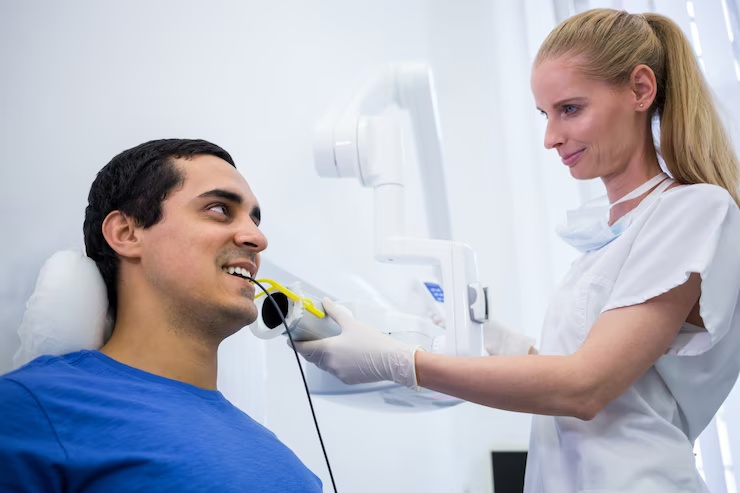Introduction:
Dental anxiety and fear are common among individuals of all ages, often leading to avoidance of necessary dental procedures. Sedation dentistry has emerged as a solution to alleviate anxiety and discomfort during dental treatments, providing patients with a more relaxed and comfortable experience. This article aims to explore various sedation dentistry options available, their benefits, risks, and considerations to help patients make informed decisions about their dental care.
Understanding Dental Anxiety:
Dental anxiety is a prevalent issue affecting millions worldwide. It can stem from various factors, including fear of pain, embarrassment, or negative past experiences. For some individuals, even the thought of visiting a dentist induces significant stress and apprehension, leading to avoidance of dental care altogether. Consequently, dental problems exacerbate, resulting in more extensive and costly treatments later on.
The Role of Sedation Dentistry:
Sedation dentistry offers a solution to mitigate the effects of dental anxiety and fear. By inducing a state of relaxation and calmness, sedation techniques enable patients to undergo dental procedures comfortably. Sedation can be administered in various forms, ranging from mild to deep, depending on the patient's level of anxiety and the complexity of the procedure.
Types of Sedation Dentistry:
- Nitrous Oxide (Laughing Gas): Nitrous oxide, commonly known as laughing gas, is a mild sedative administered through a mask placed over the nose. It induces a euphoric and relaxed state, allowing patients to remain conscious throughout the procedure. One of the key advantages of nitrous oxide is its rapid onset and quick recovery time, making it suitable for short dental procedures.
- Oral Sedation: Oral sedation involves taking a prescribed sedative medication, typically a pill, before the dental appointment. These medications belong to the benzodiazepine family and produce a calming effect, reducing anxiety and fear. Oral sedation is suitable for patients with moderate levels of anxiety and is often combined with local anesthesia for pain control.
- Intravenous (IV) Sedation: IV sedation involves the administration of sedative drugs directly into the bloodstream through a vein. This method induces a deeper level of sedation compared to nitrous oxide or oral sedation, yet the patient remains conscious and able to respond to verbal cues. IV sedation is commonly used for more complex dental procedures or for patients with severe dental anxiety.
- General Anesthesia: General anesthesia is the deepest form of sedation, rendering the patient unconscious throughout the dental procedure. It is typically reserved for extensive treatments or patients with profound fear or special needs. General anesthesia is administered and monitored by a trained anesthesiologist in a hospital or specialized dental setting.
Benefits of Sedation Dentistry:
- Reduced Anxiety and Fear: Sedation dentistry effectively alleviates feelings of anxiety and fear associated with dental visits, enabling patients to receive necessary treatment without distress.
- Increased Comfort: Sedatives induce a state of relaxation, promoting physical comfort during dental procedures. Patients often report feeling little to no discomfort throughout the treatment.
- Improved Treatment Outcomes: By minimizing patient discomfort and anxiety, sedation dentistry allows dentists to perform procedures more efficiently and accurately, resulting in better treatment outcomes.
- Time Efficiency: Sedation dentistry can help streamline dental procedures by reducing patient apprehension and facilitating smoother workflow for the dental team.
Considerations and Risks:
While sedation dentistry offers numerous benefits, it's essential to consider potential risks and precautions associated with each sedation method:
- Side Effects: Sedative medications may cause side effects such as drowsiness, dizziness, nausea, or headache. Patients should discuss any pre-existing medical conditions or medications with their dentist to minimize risks.
- Allergic Reactions: Some individuals may be allergic to specific sedative drugs. Dentists must conduct thorough medical evaluations and allergy assessments before administering sedation.
- Over-sedation: Improper dosing or administration of sedatives can lead to over-sedation, resulting in complications such as respiratory depression or cardiovascular problems. Proper monitoring and dosage adjustments are crucial to ensure patient safety.
- Post-procedural Effects: Depending on the type of sedation used, patients may experience lingering effects such as drowsiness or impaired cognitive function after the procedure. It's essential to arrange for transportation home and avoid operating machinery or making significant decisions for a certain period post-treatment.
Conclusion:
Sedation dentistry provides a valuable solution for individuals struggling with dental anxiety and fear, allowing them to receive necessary dental care in a comfortable and stress-free manner. By understanding the different sedation options available, patients can work with their dentists to choose the most suitable approach based on their individual needs and the complexity of the procedure. However, it's crucial for patients to weigh the benefits against potential risks and discuss any concerns with their dental provider to ensure a safe and positive experience. Ultimately, prioritizing comfort and care through sedation dentistry can lead to improved oral health outcomes and a renewed sense of confidence in dental visits.


No comments yet